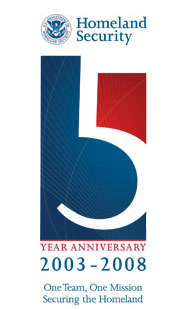
| Home | Information Sharing & Analysis | Prevention & Protection | Preparedness & Response | Research | Commerce & Trade | Travel Security & Procedures | Immigration |
| About the Department | Open for Business | Press Room |

The threat level in the airline sector is High or Orange. Read more.

Protecting and ensuring the continuity of the critical infrastructure and key resources (CIKR) of the United States are essential to the nation's security, public health and safety, economic vitality, and way of life.
Homeland Security Presidential Directive 7 (HSPD-7) established U.S. policy for enhancing CIKR protection by establishing a framework for security partners to identify, prioritize, and protect the nation's CIKR from terrorist attacks. The directive identified 17 CIKR sectors and designated a Federal Sector-Specific Agency (SSA) to lead CIKR protection efforts in each.
Each of the 17 Sector-Specific Agencies developed a Sector-Specific Plan that details the application of the NIPP framework to the unique characteristics and risk landscape of their sector.
Sector-Specific Plans (SSPs) support the National Infrastructure Protection Plan by establishing a coordinated approach to national priorities, goals, and requirements for critical infrastructure and key resources protection.
The Homeland Security Act of 2002 provides the primary authority for the overall homeland security mission. This act charged the Department of Homeland Security with primary responsibility for developing a comprehensive national plan to secure CIKR and recommend “the measures necessary to protect the key resources and critical infrastructure of the United States.” This comprehensive plan is the National Infrastructure Protection Plan (NIPP), published by the Department in June 2006. The NIPP provides the unifying structure for integrating a wide range of efforts for the protection of CIKR into a single national program.
This page was last reviewed/modified on April 3, 2008.